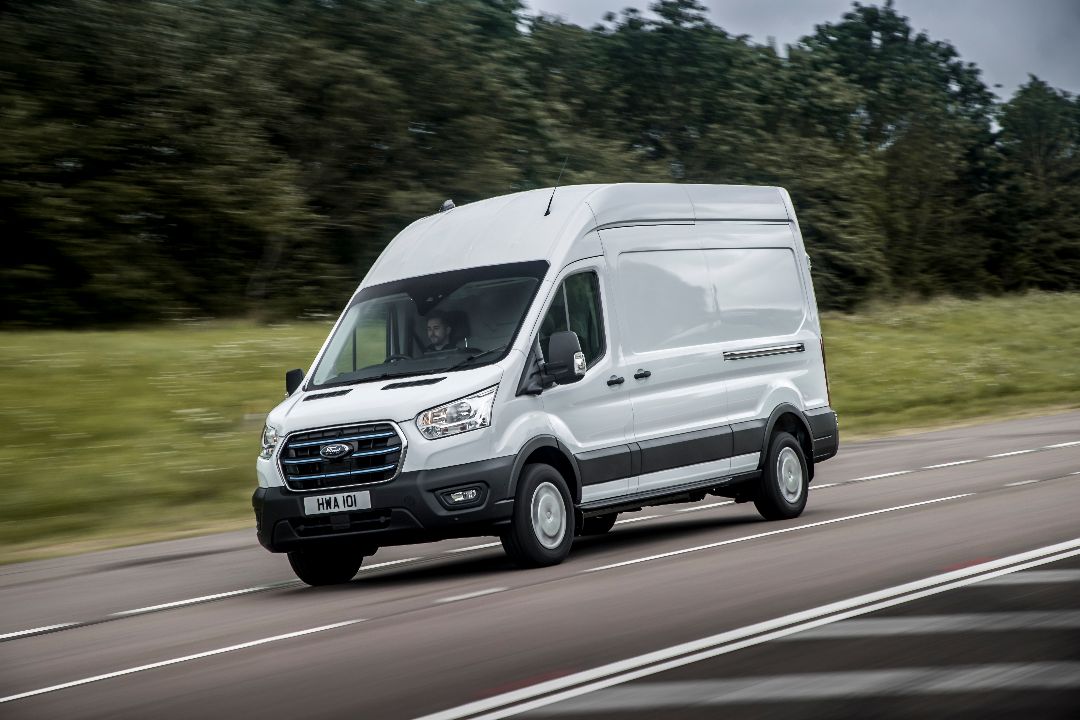
Electric vans won’t become a reality until the really big players enter the market, so hold on to your hats because there is no bigger name in the world of vans than the Ford Transit and it’s latest large electric van the Ford E-Transit.
The Transit is one of the UK’s best selling vans, second only to the Ford Transit Custom, which is already available as a plug-in hybrid Ford Transit Custom PHEV.
Such is our reliance on home deliveries and courier services, the brand-new electric Ford E-Transit is arguably the most important electric model of any electric vehicle to date, not least because big fleets will likely adopt them in their thousands but because it will lead to a greater level of take up and wider interest in electric models.
The Ford E-Transit has to be good then, and fortunately it is. Keep reading to find out why.
Officially launched in August 2021, details of the E-Transit have been circulating for a while. It's part of Ford’s ambitious global plans to electrify its entire range.
The E-Transit large electric van will be the first fully electric Ford commercial vehicle in the line-up. In time, there will be electric versions of other models including an the E-Transit Custom, electric Transit Connect and an electric Ford Ranger pick-up truck - as well as a hybrid Ranger PHEV.
The best E-Transit for payload can transport up to a maximum 1,758kg which is for a 4.25-tonne van. A standard 3.5-tonne E-Transit has a payload of just over 1,000kg
The E-Transit badge is going to define the new normal for electric vans. Its performance is at an entirely new levell for a van. That's because the electric Transit is the most powerful van on sale in the UK. With 198kW (265hp) for the most powerful model and a slightly down rated 135kW (181hp) version both are very quick. There’s also a massive 430Nm of torque available making the E-Transit a really gutsy performer capable of not only going fast but going fast when fully laden or when towing.
With all that power, the E-Transit is not going to be able to go very far, right? Wrong. The E-Transit has a choice of two batteries, a 68kWh battery or an 89kWh battery. The smaller battery pack gives a range of up to 196 miles according to the WLTP test cycle that they use to determine the range, while the larger 89kWh battery has a range of up to 250 miles (400km). That should mean a usable, practical range of at least 150 miles in the real world for the small van, when the van is fully laden, and around 200 to 210 miles from the larger model.
A regular charge from a 11.3kW wall box will take just over eight hours – ideal for someone who can charge the van up overnight. Newer models have the ability to charge at 22kW reducing the charge time on the large battery to just under six hours.
The E-Transit also has the ability to rapid charge. First generation vans with the small battery have a charging capacity of up to 115kW and can top-up from 15% to 80% will take the E-Transit just 34 minutes.
For the larger 89kWh battery the charging speed is increased to 180kW. As a result, on a rapid charger, the E-Transit can add 116 km of driving range in just 10 minutes. A 10% to 80% charge also only takes approximately 28 minutes.
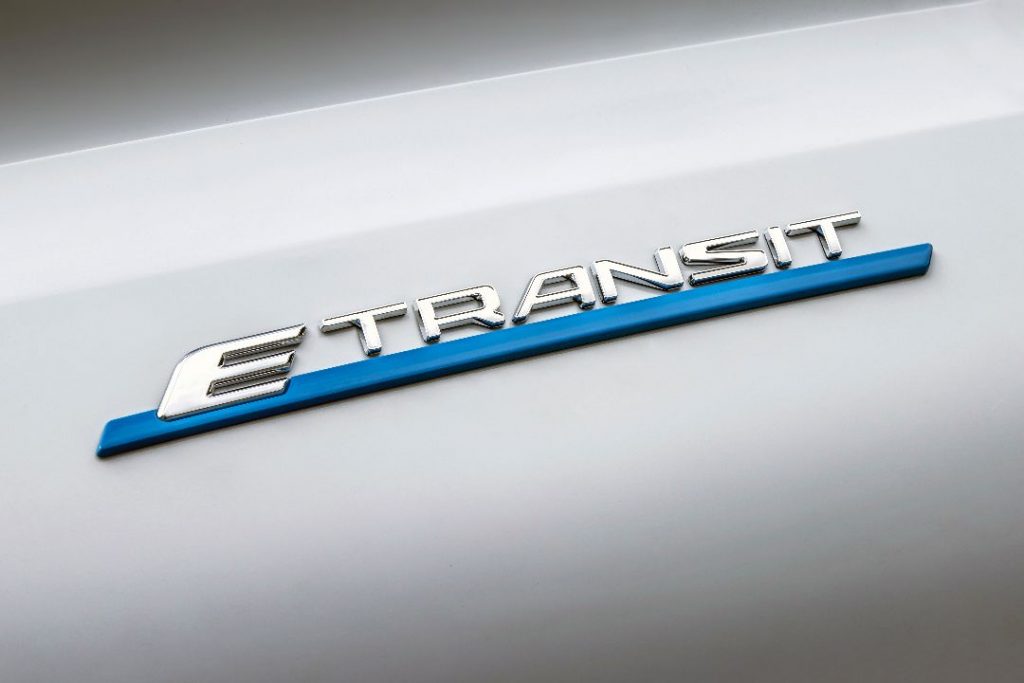
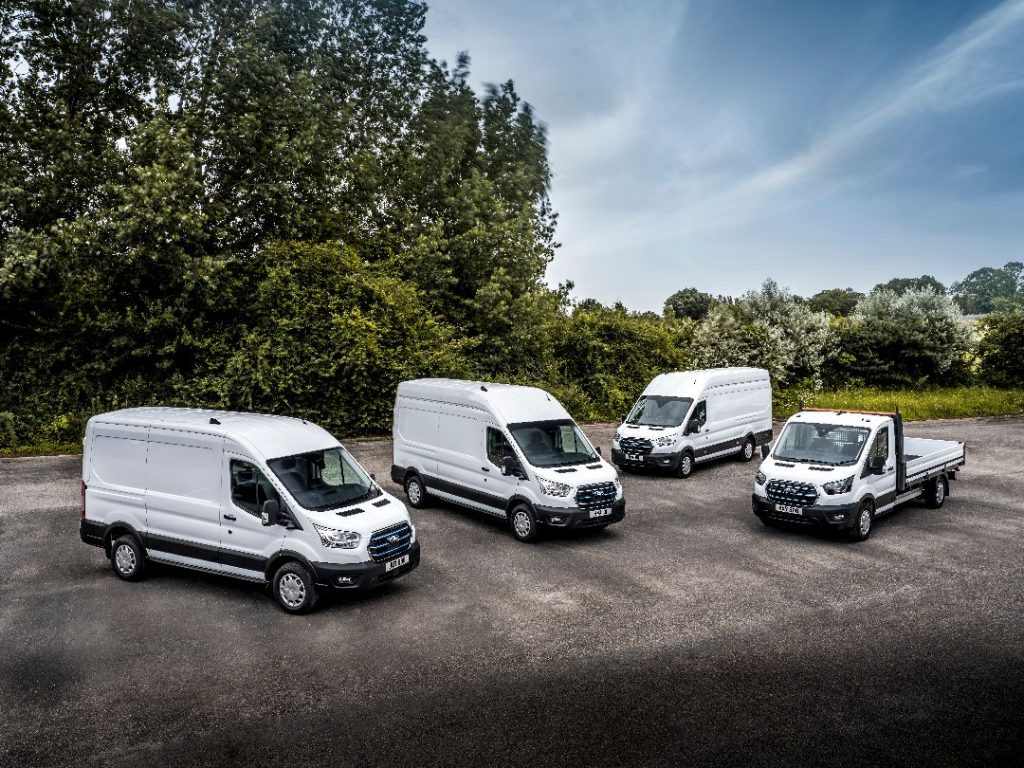
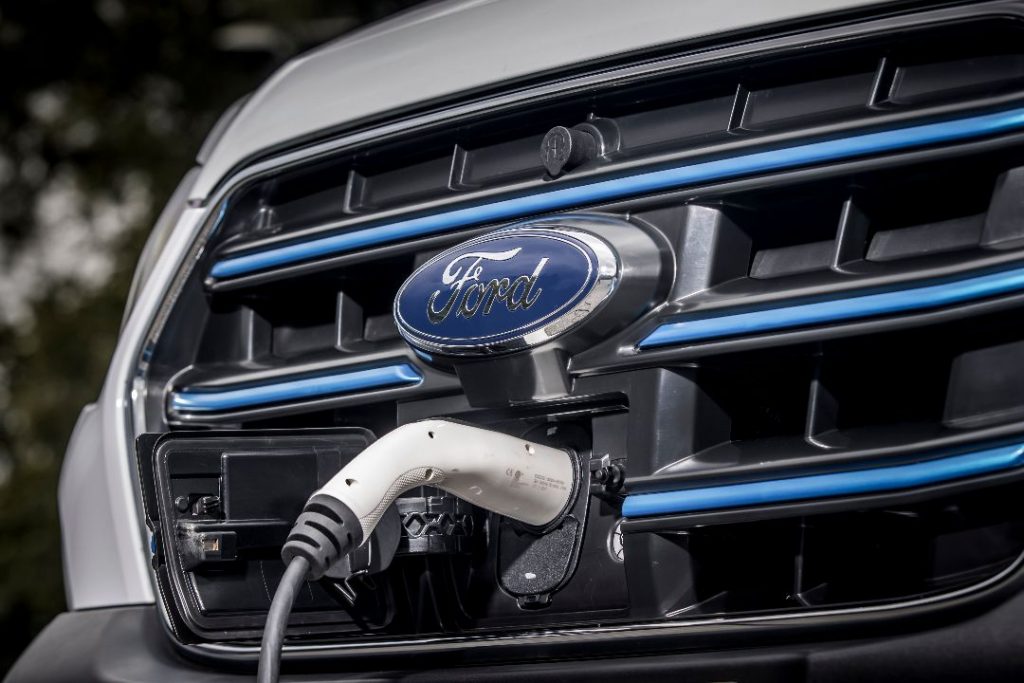
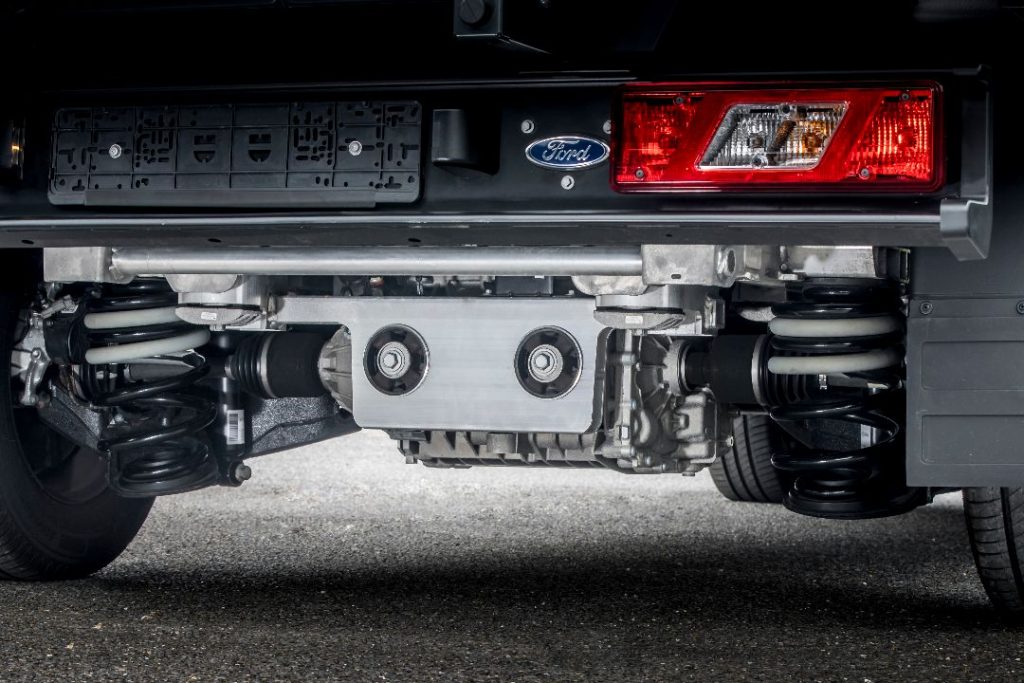
The E-Transit 68kWh has a range of 196 miles according to the official WLTP test cycle. In the real world, with a decent payload and normal driving style this will equate to around 150 miles.
The bigger battery E-Transit 89kWh model has a WLTP range of 250 miles..
The Transit range is well known for its huge choice with several hundred variations available when you consider that it is available in multiple body lengths, body types including dropside, tipper and minibus.
For the electric Transit there are 25 different models which includes short-, medium- and long-wheelbases panel vans with two roof heights. There’s also three different gross vehicle weights which means you can have an E-Transit van at 3.5-tonnes, 3.9-tonnes or 4.25-tonnes. Because of special allowances for electric vehicles that means a driver with a regular car licence can still drive all of them. Unlike in a diesel engine van, where a driver is restricted to driving vehicles at 3.5-tonnes and under.
Load volumes for the biggest vans is up to 15.1m3 but because all the important components are between the chassis and at the rear axle, there is no loss of loadspace capacity in the back.
Without an engine and gearbox, there isn’t also a huge amount of weight carrying capacity lost either. The most load hungry models can carry 1,758kg (that’s for a 4.25 tonne model) but a standard 3.5-tonne E-Transit van is still capable of moving one tonne.
If you need something a little different to a regular van, the electric Transit is also available as a double-cab-in-van and as a chassis cab to allow bodybuilders to add bespoke bodies such as tippers, Luton or flat bed bodies.
Yes. But you’ll find it very different to a regular diesel van not least because there is just so much power. The E-Transit doesn’t feel like a regular large van for several reasons, the first of which being all that power.
The 198kW electric motor produces 265hp with a 135kW option delivering 181hp - both of which are a lot for a van. It feels fast from the moment you touch the accelerator thanks to the 430Nm of torque that is instantly available. Its so quick that fleet managers might be concerned about its safety in the hands of an over exuberant driver but to lessen those fears there is an Eco mode which curbs the power and makes it a lot more restrained.
If you do want to drive the socks off it, though, the E-Transit is more than willing to oblige. It is a very well balanced and entertaining van to fling around some bends.
The batteries hang beneath the van. That's because they are bolted to the chassis. This low slung weight contributes massively to the excellent handling of the E-Transit. It lowers its centre of gravity and helps stick it to the road.
The E-Transit also gets different rear suspension to the regular Transit van. Ford has redesigned the rear axle to accomodate the motor but this left them without room for the leaf springs. The resulting change was to add independent coil springs into the rear-axle assembly. This not only improves the ride quality but also the handling, so it's a very good change indeed.
The E-Transit has two different ways of doing regenerative braking – an L mode button within a rotary dial on the dash or by using the brake pedal. The brake pedal method is a two-stage affair. The first touch of the brake pedal gives a moderate level of braking, which is quite gentle and subtle. A second touch of the brake pedal increases the force, generating the same level of braking as the L mode.
Which one you use depends on your own personal preference. The L mode makes it a really simple one-pedal method of driving. The two taps of the brake gives you a bit more control over how the van behaves.
The E-Transit has three driving modes, but they're not quite like the ones found in other electric vans. There's a Normal mode for every day driving, as well as a dedicated Eco mode which limits the top speed, decreases the acceleration and reduces the fan speed for the climate control. But, there's also a a Slippery option for wet conditions. This alters the handling, traction control and power settings to make it safer to driver the E-Transit.
Yes and no, but in the grand scheme of things the E-Transit is really quite quiet. Because there's no rattling combustion engine most drivers think electric vans can be noisy. In reality you're just noticing a very different type of noise, mostly wind and road noise. The Ford E-Transit's motor is in the rear, so the noisiest part is a really long way from the driver.
That makes the E Transit much quieter than its competitors which tend to be front-wheel-drive. As for the other types of noise, the electric Transit is pretty good here too. There's not much noticeable wind noise around the A-pillars or wing mirrors and road noise is low too.
The outside of the E-Transit is almost identical to the diesel van, but on the inside there is one notable changed. The biggest difference is the large 12in touchscreen borrowed from the Mustang Mach-E performance SUV. It uses SYNC 4 – Ford’s connectivity system – to give you infotainment and navigation, but also bundled up in the package is a FordPass Connect modem that enables new cloud connected navigation. This will let drivers get real-time information on charging, traffic, live parking availability and charging stations.
SYNC 4 will also get regular over-the-air, wireless software updates keeping the system current and up-to-date.
It also has an intelligent range predictor to give drivers a more accurate estimate of their range based on driving style, weather and traffic.
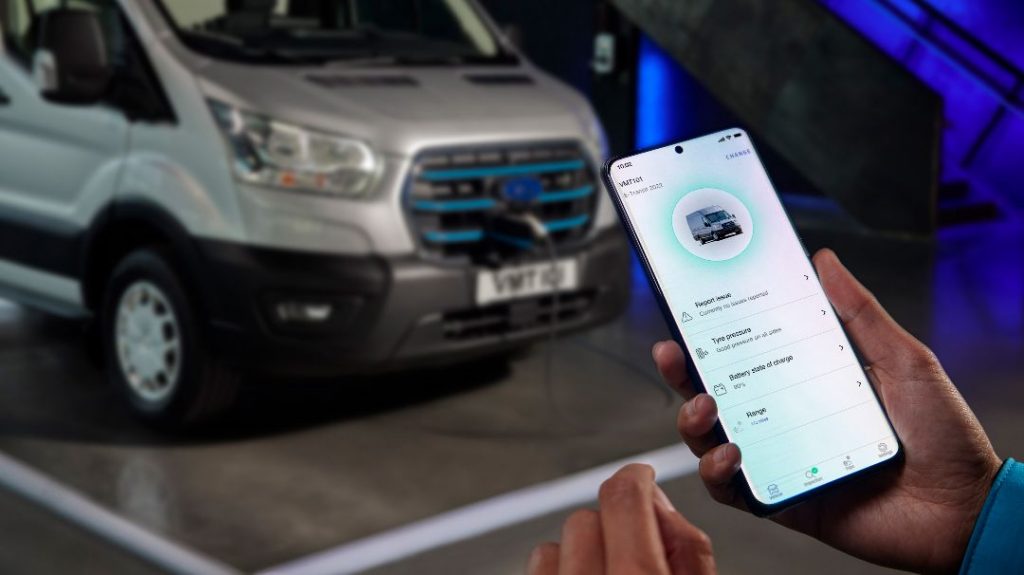
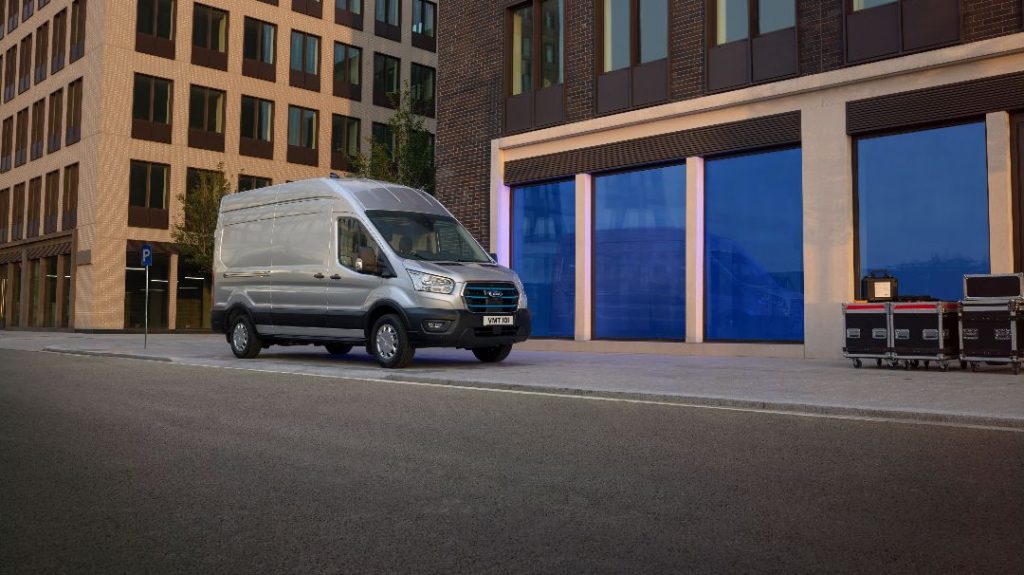
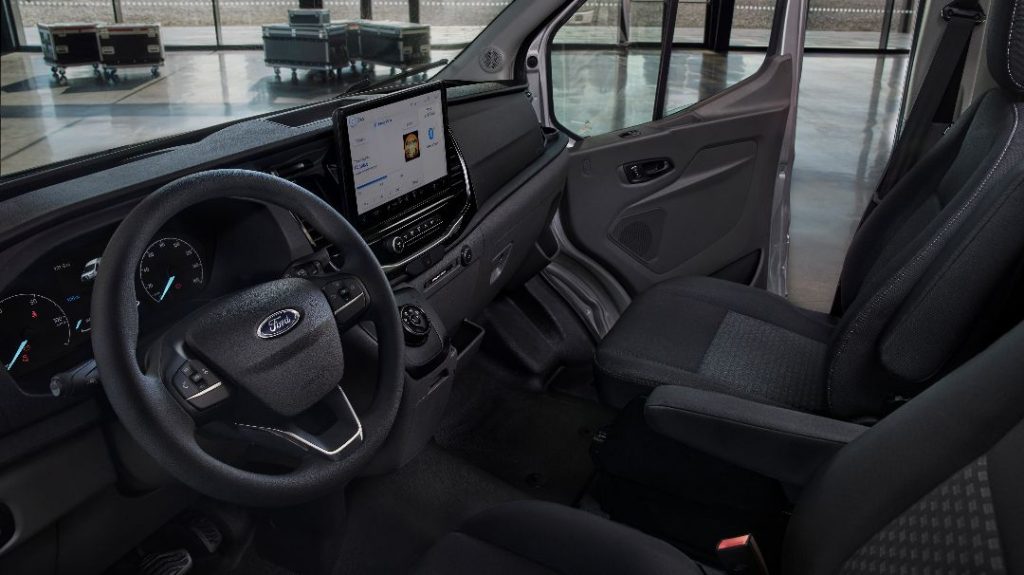
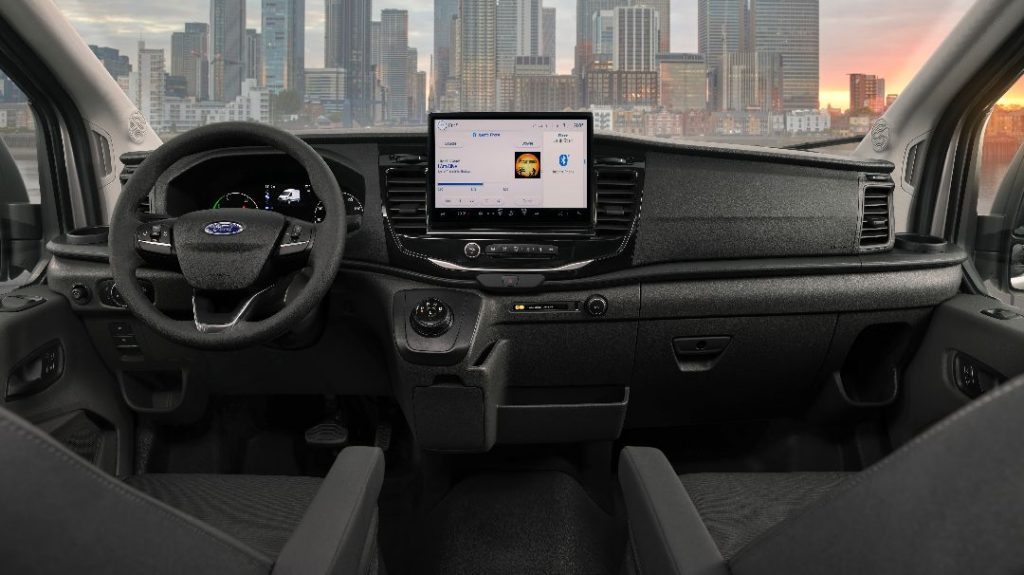
Ford has thought about this one, and claims that the SYNC 4 screen has resisted a simulated decades worth of sunlight exposure during durability testing. It’s also wipe-clean, glare-resistant, and has a toughened shatterproof film.
The Ford E-Transit is available in two different trim levels with Leader (previously called Base) and Trend options.
Which ever one you go for, their specification is higher than their equivalent diesel models. The Base model E-Transit gets Electronic Air Temperature Control, SYNC 4 with 12-inch touchscreen display, Keyless Start, heated seats, Quickclear windscreen and heated electric mirrors. They also have the FordPass Connect modem that comes with a lifetime subscription to FordPass Pro or Ford Telematics Essentials. Buyers will also get use of the FordPass charging network for a year. Fleet customers get a one-year subscription to Ford Telematics.
Trend models add a Ford Connected Navigation System, cruise control, Pre‑Collision Assist with Pedestrian Detection, lane departure warning, Lane-Keeping Aid and front and rear parking sensors.
A big new upgrade has been made to the Reverse Brake Assist. It uses a camera and sensors to detect pedestrians, cyclists and static objects when reversing. Drivers will get a warning before the van is automatically stopped if there’s no reaction.
There’s also a new 360 Camera to give a birds-eye view of the surrounding area on the 12in dashboard screen.
Are you the forgetful type that always forgets to charge your tools? Then the E-Transit has a solution. Pro Power Onboard is an electricity supply for up to 2.3kW of juice that will let you run tools, lights or even fridge units, replacing the need for a generator.
The Ford E-Transit is made in Turkey at Ford’s state of the art Kocaeli plant. You can see more of the facilities in the video above. The plant also builds the regular Transit van and is the where the Ford Transit Custom is built. Ford’s small van, the Ford Courier, are also built at the Kocaeli plant in Turkey.
The Ford E-Transit had a launch price of £42,695 (excluding VAT) when it went on sale in the UK. Order books opened in May 2021 with deliveries of the first customer vehicles in Spring 2022.
The basic warranty is for three years and 60,000 miles, but the Ford E-Transit also has an additional eight-year 100,000 mile warranty on all of the high-voltage electric components including the battery.
Servicing intervals are still one‑year but with an unlimited mileage. It will also be 40% cheaper to service due to the fact there are fewer moving parts.
It also gets a one-year roadside assistance package which includes rescue charging.
The base level warranty for the E-Transit is for 3 years and 60,000 miles.
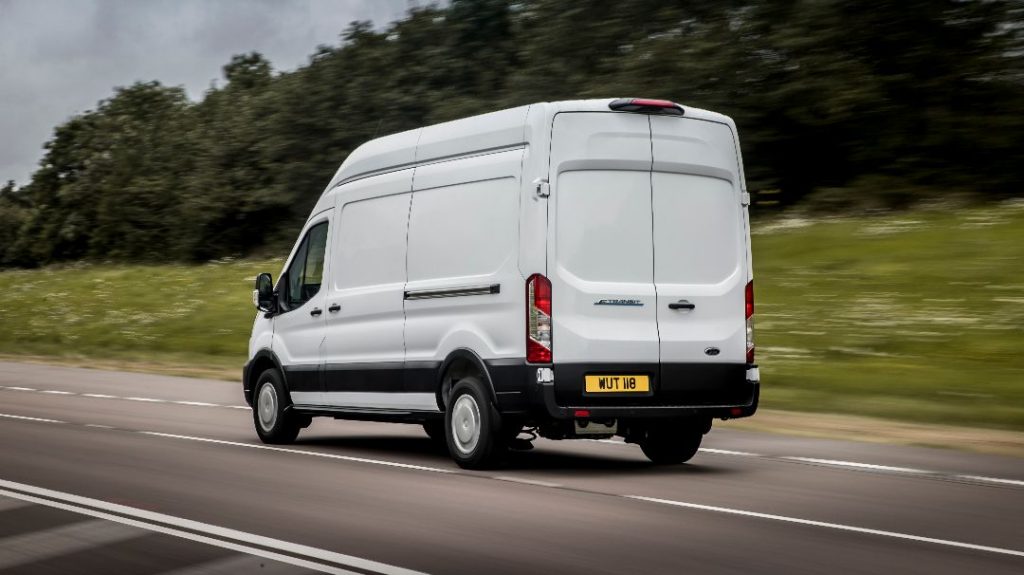
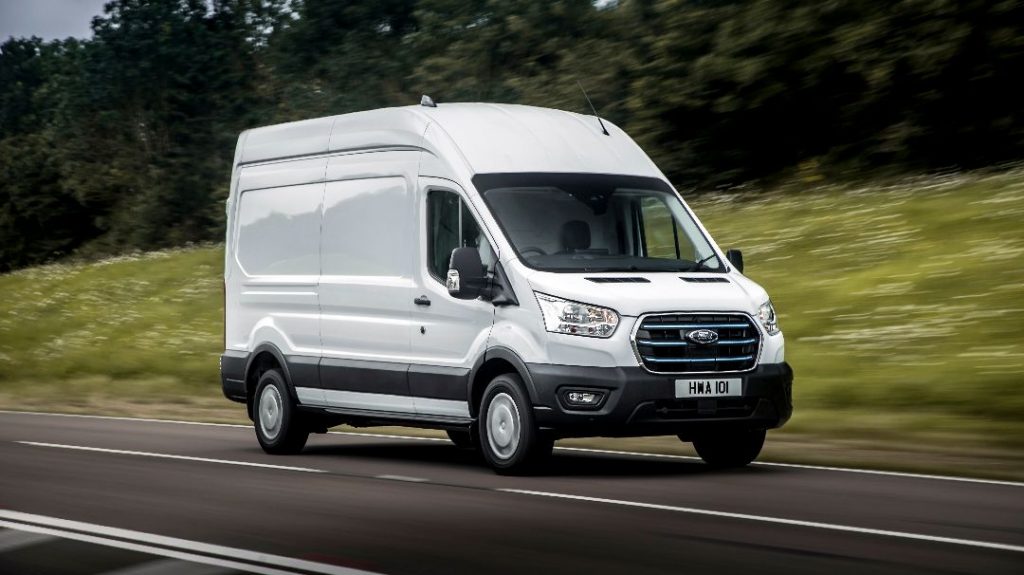
Electric vehicles are far easier to maintain as they have fewer moving parts. Initially the E-Transit has a one year unlimited mileage servicing schedule, however with the introduction of the larger 89kWh battery in April 2024 that servicing schedules increased for all vans. For both the new battery and the current model the E-Transit has an extended two-year/unlimited mileage service interval.
There's no denying the importance of the Ford E-Transit. As one of Britain's best selling vans, anything with a Transit badge is significant. But the range, power and price of the E-Transit make it a really interesting option.
OK, more than 40 grand for the entry-level van is going to be a pretty steep ask for many people but if you think of the E-Transit in the context of the other large electric vans that are available in the market then it is actually really good value for money.
A similar Mercedes-Benz Sprinter will cost you £10,000 more. Even the Maxus E-Deliver 9 will still set you back around £8,000 more.
Then there is the range of the electric Transits on offer. A whopping 25 versions means there's likely to be a model to suit most people's needs.
Perhaps our greatest reservation is all that power - particularly if you're running a fleet. With around 20% more power than the most powerful van on the market it will require a lot of trust to not have drivers just flooring it at every opportunity.
Fortunately, the E-Transit has a built in modem. Using the FordLiive platform (and no that's not a typo, there really are two ii in FordLiive) that interacts with the van, people will one day be able to control more than just locking and unlocking the van. There's potential for the power to be dialed back, or for Eco mode to be permenantly engaged. The whole setup could eventually be tailored to your needs.
There are a growing number of new big electric vans on the market, so you're not lost for choice. Direct competitors for the Ford E-Transit include the Mercedes-Benz eSprinter and Maxus E Deliver 9.
The eSprinter is sophisticated and well-built like the E-Transit, while the E Deliver 9 can nearly rival it for power and range. There is also the Renault Master E-Tech, an update of the Renault Master ZE which has been on sale since 2017.
The Master E-Tech doesn't offer as much choice as the electric Transit range and has a significantly smaller battery and a lot less power. Then there are also other electric vans including the Citroen e-Relay and Peugeot e-Boxer. They are third party conversions and not really in the same league as the E-Transit. Fiat also offers a convicing electric van, the Fiat E-Ducato which is only let down by using the older cabin rather than the new interior from the Fiat Ducato launched in 2022.
The Ford E-Transit is the most convincing electric van on sale. Its 196 mile range with rapid charging capabilities also make it useable for most van driver's needs.